formerly eScholarship Editions


|
|
|
|
Your search for
'Victorian History' in subject
found 9 book(s). | Modify Search | Displaying 1 - 9 of 9 book(s) | |
| 1. | 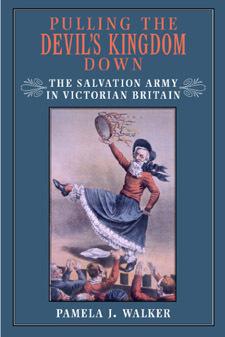 | Title: Pulling the devil's kingdom down: the Salvation Army in Victorian Britain Author: Walker, Pamela J 1960- Published: University of California Press, 2001 Subjects: History | Christianity | Victorian History | Religion | Women's Studies Publisher's Description: Those people in uniforms who ring bells and raise money for the poor during the holiday season belong to a religious movement that in 1865 combined early feminism, street preaching, holiness theology, and intentionally outrageous singing into what soon became the Salvation Army. In Pulling the Devil's Kingdom Down, Pamela Walker emphasizes how thoroughly the Army entered into nineteenth-century urban life. She follows the movement from its Methodist roots and East London origins through its struggles with the established denominations of England, problems with the law and the media, and public manifestations that included street brawls with working-class toughs. The Salvation Army was a neighborhood religion, with a "battle plan" especially suited to urban working-class geography and cultural life. The ability to use popular leisure activities as inspiration was a major factor in the Army's success, since pubs, music halls, sports, and betting were regarded as its principal rivals. Salvationist women claimed the "right to preach" and enjoyed spiritual authority and public visibility more extensively than in virtually any other religious or secular organization. Opposition to the new movement was equally energetic and took many forms, but even as contemporary music hall performers ridiculed the "Hallelujah Lasses," the Salvation Army was spreading across Great Britain and the Continent, and on to North America. The Army offered a distinctive response to the dilemmas facing Victorian Christians, in particular the relationship between what Salvationists believed and the work they did. Walker fills in the social, cultural, and religious contexts that make that relationship come to life. [brief] Similar Items |
| 2. | 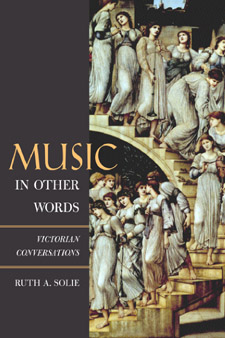 | Title: Music in other words: Victorian conversations Ruth A. Solie Author: Solie, Ruth A Published: University of California Press, 2004 Subjects: Music | Classical Music | Musicology | Women's Studies | Victorian History Publisher's Description: Just as the preoccupations of any given cultural moment make their way into the language of music, the experience of music makes its way into other arenas of life. To unearth these overlapping meanings and vocabularies from the Victorian era, Ruth A. Solie examines sources as disparate as journalism, novels, etiquette manuals, religious tracts, and teenagers' diaries for the muffled, even subterranean, conversations that reveal so much about what music meant to the Victorians. Her essays, giving voice to "what goes without saying" on the subject - that cultural information so present and pervasive as to go unsaid - fill in some of the most intriguing blanks in our understanding of music's history. This much-anticipated collection, bringing together new and hard-to-find pieces by an acclaimed musicologist, mines the abundant casual texts of the period to show how Victorian-era people - English and others - experienced music and what they understood to be its power and its purposes. Solie's essays start from topics as varied as Beethoven criticism, Macmillan's Magazine, George Eliot's Daniel Deronda, opera tropes in literature, and the Victorian myth of the girl at the piano. They evoke common themes - including the moral force that was attached to music in the public mind and the strongly gendered nature of musical practice and sensibility - and in turn suggest the complex links between the history of music and the history of ideas. [brief] Similar Items |
| 3. | 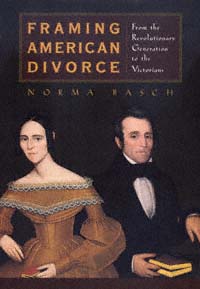 | Title: Framing American divorce: from the revolutionary generation to the Victorians Author: Basch, Norma Published: University of California Press, 1999 Subjects: History | Law | United States History | Gender Studies | Victorian History Publisher's Description: Divorce has become one of the most widely discussed issues in America. In this innovative exploration of the phenomenon of divorce in American society, Norma Basch uses a variety of analytic perspectives to enrich our understanding of the meaning of divorce during the formative years of both the nation and its law, roughly 1770 to 1870. She provides a fascinating, thoughtful look at divorce as a legal action, as an individual experience, and as a cultural symbol in its era of institutionalization and traces the powerful legacy of the first American divorce experiences for us today.Using a unique methodology, Basch fragments her story into three discrete but chronologically overlapping perspectives. In Part I, "Rules," she analyzes the changing legal and legislative aspects of divorce and the public response to them. Part II, "Mediations," focuses on individual cases and presents a close-up analysis of the way ordinary women and men tested the law in the courts. And Part III, "Representations," charts the spiraling imagery of divorce through various fiction and non-fiction narratives that made their way into American popular culture during the nineteenth century.The composite picture that emerges in Framing American Divorce is a vividly untidy one that exposes the gulf between legal and moral abstractions and everyday practices. Divorce, Basch argues, was always a focal point of conflict between the autonomy of women and the authority of men. Tracing the legal, social, and cultural experience of divorce allows Basch to provide a searching exploration of the limits of nineteenth-century ideals of domesticity, romantic love, and marriage, and their legacy for us today. She brings her findings up-to-date with a provocative discussion of the current debate over fault or no-fault divorce. [brief] Similar Items |
| 4. | 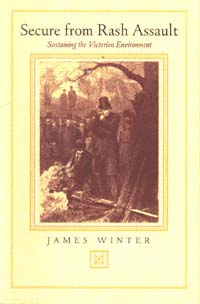 | Title: Secure from rash assault: sustaining the Victorian environment Author: Winter, James H 1925- Published: University of California Press, 1999 Subjects: History | Victorian History | Ecology | Geography | Technology and Society Publisher's Description: Nineteenth-century Britain led the world in technological innovation and urbanization, and unprecedented population growth contributed as well to the "rash assault," to quote Wordsworth, on Victorian countrysides. Yet James Winter finds that the British environment was generally spared widespread ecological damage.Drawing from a remarkable variety of sources and disciplines, Winter focuses on human intervention as it not only destroyed but also preserved the physical environment. Industrial blight could be contained, he says, because of Britain's capacity to import resources from elsewhere, the conservative effect of the estate system, and certain intrinsic limitations of steam engines. The rash assault was further blunted by traditional agricultural practices, preservation of forests, and a growing recreation industry that favored beloved landscapes. Winter's illumination of Victorian attitudes toward the exploitation of natural resources offers a valuable preamble to ongoing discussions of human intervention in the environment. [brief] Similar Items |
| 5. | 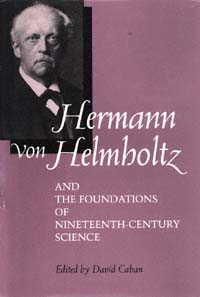 | Title: Hermann von Helmholtz and the foundations of nineteenth-century science Author: Cahan, David Published: University of California Press, 1994 Subjects: Science | History | History and Philosophy of Science | Victorian History Publisher's Description: Hermann von Helmholtz (1821-1894) was a polymath of dazzling intellectual range and energy. Renowned for his co-discovery of the second law of thermodynamics and his invention of the ophthalmoscope, Helmholtz also made many other contributions to physiology, physical theory, philosophy of science and mathematics, and aesthetic thought. During the late nineteenth century, Helmholtz was revered as a scientist-sage - much like Albert Einstein in this century.David Cahan has assembled an outstanding group of European and North American historians of science and philosophy for this intellectual biography of Helmholtz, the first ever to critically assess both his published and unpublished writings. It represents a significant contribution not only to Helmholtz scholarship but also to the history of nineteenth-century science and philosophy in general. [brief] Similar Items |
| 6. | 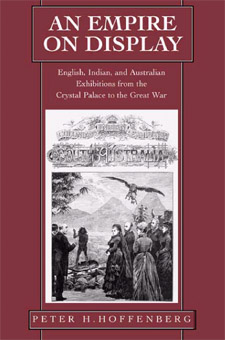 | Title: An empire on display: English, Indian, and Australian exhibitions from the Crystal Palace to the Great War Author: Hoffenberg, Peter H 1960- Published: University of California Press, 2001 Subjects: History | European History | Victorian History | Asian History | South Asia | Pacific Rim Studies | European Studies Publisher's Description: The grand exhibitions of the Victorian and Edwardian eras are the lens through which Peter Hoffenberg examines the economic, cultural, and social forces that helped define Britain and the British Empire. He focuses on major exhibitions in England, Australia, and India between the Great Exhibition of 1851 and the Festival of Empire sixty years later, taking special interest in the interactive nature of the exhibition experience, the long-term consequences for the participants and host societies, and the ways in which such popular gatherings revealed dissent as well as celebration. Hoffenberg shows how exhibitions shaped culture and society within and across borders in the transnational working of the British Empire. The exhibitions were central to establishing and developing a participatory imperial world, and each polity in that world provided distinctive information, visitors, and exhibits. Among the displays were commercial goods, working machines, and ethnographic scenes. Exhibits were intended to promote external commonwealth and internal nationalism. The imperial overlay did not erase significant differences but explained and used them in economic and cultural terms. The exhibitions in cities such as London, Sydney, and Calcutta were living and active public inventories of the Empire and its national political communities. The process of building and consuming such inventories persists today in the cultural bureaucracies, museums, and festivals of modern nation-states, the appeal to tradition and social order, and the actions of transnational bodies. [brief] Similar Items |
| 7. | 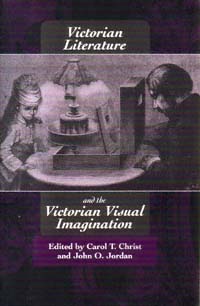 | Title: Victorian literature and the Victorian visual imagination Author: Christ, Carol T Published: University of California Press, 1995 Subjects: Literature | Art History | English Literature | Victorian History | Literary Theory and Criticism Publisher's Description: Nineteenth-century British culture frequently represented the eye as the preeminent organ of truth. These essays explore the relationship between the verbal and the visual in the Victorian imagination. They range broadly over topics that include the relationship of optical devices to the visual imagination, the role of photography in changing the conception of evidence and truth, the changing partnership between illustrator and novelist, and the ways in which literary texts represent the visual. Together they begin to construct a history of seeing in the Victorian period. [brief] Similar Items |
| 8. | 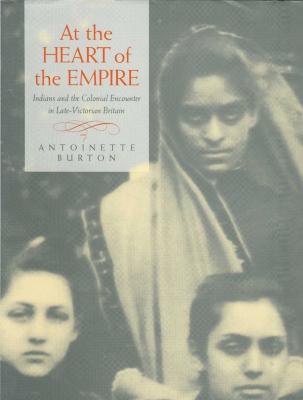 | Title: At the heart of the Empire: Indians and the colonial encounter in late-Victorian Britain Author: Burton, Antoinette M 1961- Published: University of California Press, 1998 Subjects: History | Women's Studies | Autobiographies and Biographies | South Asia | Victorian History | Travel | European History | Asian History Publisher's Description: Antoinette Burton focuses on the experiences of three Victorian travelers in Britain to illustrate how "Englishness" was made and remade in relation to imperialism. The accounts left by these three sojourners - all prominent, educated Indians - represent complex, critical ethnographies of "native" metropolitan society and offer revealing glimpses of what it was like to be a colonial subject in fin-de-siècle Britain. Burton's innovative interpretation of the travelers' testimonies shatters the myth of Britain's insularity from its own construction of empire and shows that it was instead a terrain open to continual contest and refiguration.Burton's three subjects felt the influence of imperial power keenly during even the most everyday encounters in Britain. Pandita Ramabai arrived in London in 1883 seeking a medical education and left in 1886, having resisted the Anglican Church's attempts to make her an evangelical missionary. Cornelia Sorabji went to Oxford to study law and became the first Indian woman to be called to the Bar. Behramji Malabari sought help for his Indian reform projects in England, and subjected London to colonial scrutiny in the process. Their experiences form the basis of this wide-ranging, clearly written, and imaginative investigation of diasporic movement in the colonial metropolis. [brief] Similar Items |
| 9. | 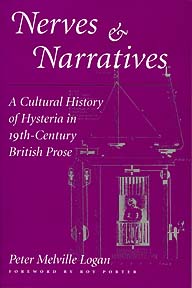 | Title: Nerves and narratives: a cultural history of hysteria in nineteenth-century British prose Author: Logan, Peter Melville 1951- Published: University of California Press, 1997 Subjects: Literature | History | History and Philosophy of Science | Literary Theory and Criticism | Victorian History | English Literature | Women's Studies Publisher's Description: The British middle class of the early nineteenth century was defined by its nervous complaints - hysteria, hypochondria, vapours, melancholia, and other maladies. Peter Melville Logan explores the link between medical theories of nervous physiology and narrative issues central to the literary writing of the period. He examines the assumption, implicit in medical thinking at the time, that the nervous body - unlike its non-nervous counterpart - has a narrative inscribed on its nerve fibers. It becomes "the body with a story to tell."Logan takes up several literary works whose nervous narrators connect their present disorder with an unnatural, unhealthy social order. Concentrating on novels by Godwin, Hays, and Edgeworth, and on De Quincey's Confessions of an English Opium-Eater , Logan weaves cultural phenomena such as crowd psychology and attitudes toward opium addiction into the basic paradigm of the nervous narrative. He explains why these social critiques always tended to promote the same distempered civilization that brought them into being. He then looks at the emergence of the working-class body in the 1840s, changing medical theories, and George Eliot's treatment of medicine in Middlemarch .Logan's book is especially valuable for its rethinking of disciplinary categories that separate medicine from literature and for bringing to light lesser-known literary texts. With a foreword by Roy Porter, it will be a welcome addition to literary, gender, and cultural studies. [brief] Similar Items |